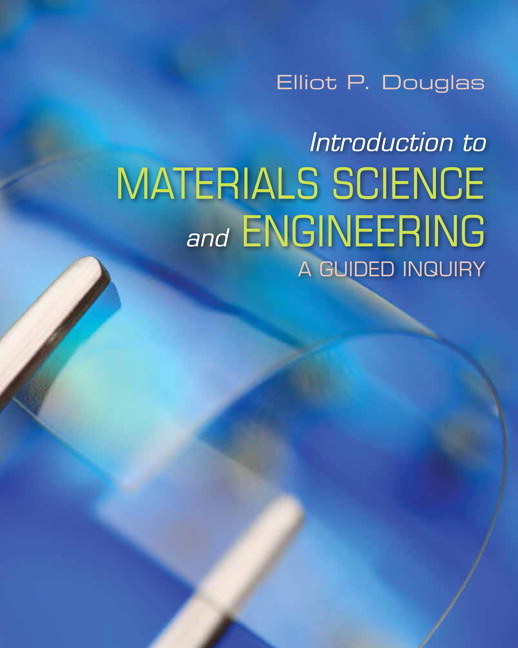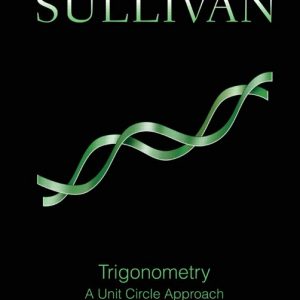Solution Manual for Introduction to Materials Science and Engineering A Guided Inquiry by Douglas

Product details:
- ISBN-10 : 9780132136426
- ISBN-13 : 978-0132136426
- Author: Elliot P. Douglas
This unique book is designed to serve as an active learning tool that uses carefully selected information and guided inquiry questions. Guided inquiry helps readers reach true understanding of concepts as they develop greater ownership over the material presented. First, background information or data is presented. Then, concept invention questions lead the students to construct their own understanding of the fundamental concepts represented. Finally, application questions provide the reader with practice in solving problems using the concepts that they have derived from their own valid conclusions.
Table contents:
Part I: Introduction
Chapter 1: What is Guided Inquiry?
1.1 First Law of Thermodynamics
1.2 Active Learning
Chapter 2: What is Materials Science and Engineering?
2.1 Types of Materials
2.2 The MSE Triangle
Part II: Atomic and Molecular Structure of Materials
Chapter 3: Bonding
3.1 Electronegativity
3.2 Primary Bonds
3.3 Non-Bonding Interactions
Chapter 4: Atomic Arrangements in Solids
4.1 Crystalline and Amorphous Materials
4.2 Unit Cells
4.3 Miller Indices
4.4 Planes and Directions in Crystals
4.5 Crystalline Defects
4.6 Ceramic Crystal Structures
4.7 Defects in Ceramic Crystals
4.8 Determining Crystal Structure: Diffraction
Chapter 5: The Structure of Polymers
5.1 Molecular Structure
5.2 Molecular Weight
5.3 Polymer Crystals
5.4 The Glass Transition
Chapter 6: Microstructure: Phase Diagrams
6.1 Defining Mixtures
6.2 Isomorphous Binary Phase Diagrams – The Lever Rule
6.3 Isomorphous Binary Phase Diagrams – Microstructure
6.4 Eutectic Phase Diagrams – Microstructure
6.5 Eutectic Phase Diagrams – Microconstituents
6.6 Peritectic Phase Diagrams
6.7 Intermetallic and Ceramic Phase Diagrams
Chapter 7: Diffusion
7.1 Diffusion Mechanisms
7.2 Diffusion Calculations: Fick’s Laws
Chapter 8: Microstructure: Kinetics
8.1 Nucleation and Growth
8.2 Heterogeneous Nucleation
8.3 Equilibrium vs. Nonequilibrium Cooling
8.4 Isothermal Transformation Diagrams
8.5 Continuous Cooling Transformation Diagrams
Part III: Properties and Uses of Materials
Chapter 9: Mechanical Behavior
9.1 Stress-Strain Curves
9.2 Bond-Force and Bond-Energy Curves
9.3 Strength of Metals
9.4 Strengthening Mechanisms for Metals
9.5 Structure-Property-Processing Relationships in Steel
9.6 Polymer Properties
9.7 Properties of Ceramics
9.8 Fracture
9.9 Fatigue
9.10 Hardness
9.11 Viscoelasticity
9.12 Composites
Chapter 10: Materials in the Environment
10.1 Electrochemistry: How Does a Battery Work?
10.2 Corrosion of Metals
10.3 Oxide Formation
10.4 Degradation of Polymers
Chapter 11: Electronic Behavior
11.1 Band Structure of Materials
11.2 Electronic Properties
11.3 Conductors
11.4 Semiconductors
11.5 Solid-State Devices
Chapter 12: Thermal Behavior
12.1 Heat Capacity
12.2 Thermal Expansion
12.3 Thermal Conductivity
Chapter 13: Materials Selection and Design
13.1 Ranking Procedures
13.2 Ashby Plots
People also search:
introduction to materials science and engineering ppt
introduction to materials science and engineering nptel
introduction to materials science and engineering a design-led approach
introduction to materials science and engineering a guided inquiry
introduction to materials science and engineering 1st edition
introduction to diffraction in materials science and engineering





